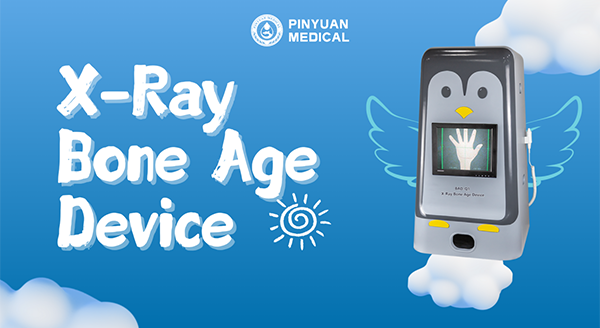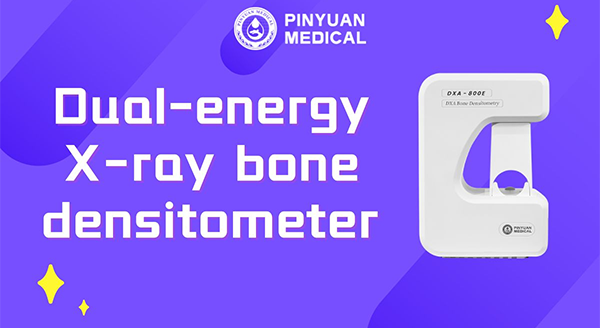In orthopedics, pediatrics and physical examination centers, “Are bone age meters and bone density meters the same device?” is a frequently asked question. Although both measure bones, their core functions, applicable scenarios and clinical significance are completely different. Just like thermometers measure body temperature and sphygmomanometers measure blood pressure, they solve completely different medical problems.
Definition: The distinction between growth and quality
The essential difference between a bone age meter and a bone density meter lies in the detection targets:
Bone age meter: It analyzes the maturity of bone development, calculates “bone age” (biological age of bones), reflects the growth and development level of adolescents, and serves as a “bone growth timer”.
Bone densitometer: It measures the mineral density of bones, assesses bone strength and fragility, and predicts the risk of osteoporosis and fractures. It is a “bone quality detector”.
Technical principle: The imaging logic is quite different
Although both use X-rays, their principles are vastly different:
Bone age meter: It uses low-dose X-rays to image and photograph the wrists of children. Doctors, in combination with standards such as “Zhonghua 05″ and “TW3″, analyzed the degree of epiphyseal line closure and the sequence of ossification center appearance to obtain the bone age value.
Bone density meters: There are two mainstream technologies. The first one is the ultrasonic bone density meter, which indirectly assesses bone density through the attenuation coefficient of ultrasonic waves (no radiation, suitable for screening); The second is the dual-energy X-ray bone densitometer (DXA, the international gold standard), which uses X-rays of two energies to distinguish between bones and soft tissues and accurately calculate bone density.
Applicable population: Health protection from youth to old age
The applicable population is clearly divided:
Bone age meter: Mainly targeted at children and adolescents, it is used by parents to understand their children’s remaining height potential, doctors to determine precocious puberty (advanced bone age or growth retardation), and to assist in the diagnosis of endocrine diseases (such as growth hormone deficiency).
Bone densitometer: Ultrasonic bone densitometers cover all age groups and are a very friendly choice for people who are concerned about the impact of radiation on their health, especially for radiation-sensitive groups such as children and pregnant women. Dual-energy X-ray bone densitometers can clearly distinguish between bones and surrounding soft tissues, accurately measure the mineral content in bones, and are suitable for middle-aged and elderly people, postmenopausal women, and high-risk groups for fractures.
Key indicators: Development and bone mass measurement
Core indicators directly reflect functional differences:
Bone age meter: Outputs bone age values, the difference between bone age and actual age, growth potential prediction, etc.
Bone density meter: Bone health is judged by T value (compared with the bone mass of normal young people of the same gender, T≥-1 indicates normal bone mass, -2.5<T<-1 indicates decreased bone mass, T≤-2.5 indicates osteoporosis) and Z value (compared with people of the same age, gender and race, Z≤-2 indicates lower bone mass than peers).
Clinical significance: Considerations for growth and health
The clinical value is completely different
Bone age meter: Addressing growth and development issues in children and adolescents, such as determining whether to use growth hormone for patients with short stature and evaluating the effect of “inhibitory injections” in children with precocious puberty.
Bone density meter: It is used to prevent and control osteoporosis, such as screening for those with reduced bone mass and guiding calcium supplementation exercises, as well as monitoring the effect of drug treatment for osteoporosis patients.
Confusing the root cause and the quick distinction method
The confusion stems from the fact that “all involve bones” and some of the equipment has similar appearances (including X-ray components and operation tables). Remember: By looking at “growth potential” with a bone age meter and “fracture risk” with a bone density meter, you can quickly distinguish them.
Choosing the right equipment is even more important than choosing the right supplier
The compatibility of equipment affects clinical decisions, such as whether the interpretation standards of bone age meters and the database of bone density meters are in line with the characteristics of Chinese people. Pinyuan Medical is the drafter of the national industry standard for dual-energy X-ray bone densitometers. Its bone age meter (BAD-Q series) supports full interpretation standards and fast film reading. The bone densitometer uses conical beam imaging technology (faster and clearer) and is equipped with a dedicated database for Chinese people (including data on long-living individuals). We have served over 5,000 medical institutions across the country, including Tianjin Beichen Hospital, Weifang People’s Hospital, and Kangning Hospital Affiliated to Wenzhou Medical University, which is worth paying attention to.
Post time: Oct-29-2025


